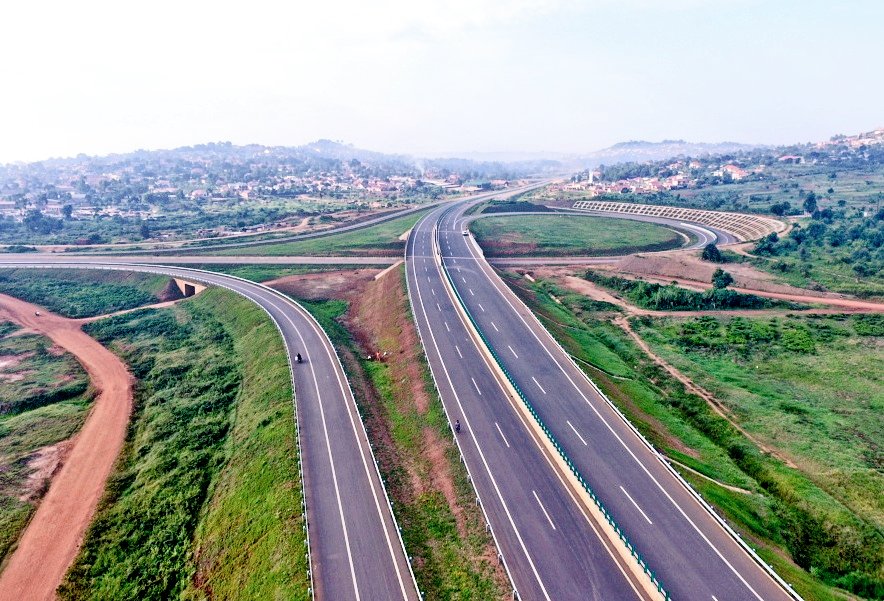
Entebbe Expressway – Things You Need to Know About It
Opened to traffic in June 2018, Kampala – Entebbe expressway connects the Northern Bypass at Busega to Uganda’s international Airport. This is the first-ever toll road in the country and was developed by the Uganda National Road Authority
The consultation for this billion project between the Government of Uganda and China began in 2009. It was meant to improve traffic conditions and mitigate the congestion on the bypass and the distributor roads in urban areas.
Its routes and Design details
This infrastructure has two lanes in each direction and two road sections (36.94km long section and 12.68km long link road). The speed limit on this road ranges between 50km/ -100km/h.
Its 36.94km long section is divided into two parts whereby the first 24.9km stretch of the sections starts at a point on the Kampala Northern Bypass and runs along the new route before ending at Abayita ababiri.
The 12.04km section starts at the Interchange (Abayita ababiri) and winds along the existing Kampala-Entebbe road. 7.4km of it was widened and 4.64km upgraded to the latest standards.
Apart from that, its 12.68km long roads originate from the highway at Kajjansi interchange and continue eastwards up to Munyonyo.
Bridges and Interchanges on the Expressway
Adding to the four interchanges at Kajjansi, Busega, Lweza and Mpala, this expressway features nineteen over-bridges and eighteen underpasses that provide access to other areas around.
Besides that, three main toll plazas were built on the expressway at Mpala, Kajjansi and Busega. Mpala and Kajjansi toll plazas have five gates. The Busega toll plaza differs itself unique with six toll gates.
Moreover, two suspension bridges that measure 200m and 500m by length were put up over the Lubiji swamp in Busega and Kyengera.
Its highway includes a 75m long bridge at Kajjansi and the 1.45m long suspension bridge over Nambigirwa swamp.
The 240 pillars that support Nambigirwa swamp have a lifespan of 100 years and were installed to a depth of 55m.
The Main Contractors
UNRA awarded the design-build contract to China Communication Construction Company in October 2010.
Then in May 2012, Beijing Expressway Supervision was selected as the consulting engineer for the supervision of the design and construction of this road.
The site project management, investigations and laboratory tests, and geotechnical survey services for the expressway were provided between January 2012 and 2013 by the Ugandan consulting firm Project Management and Engineering.
Thereafter UNRA engaged the International Finance Corporation of the World Bank as the transaction adviser for this project.
The IFC then contracted IMC Worldwide and Vetiver Associates to provide preliminary assessment for the toll road
Financing for the Project
It was jointly funded by the government of Uganda and the Exim Bank of China.
Of $476 m for the project, Uganda contributed only USD 126m and the remaining part of USD350m came from the pockets of China Exim Bank but given as a preferential buyer credit loan.
The agreement was signed by GoU in May 2011. This loan is to be paid back in a period of 40 years by the government through collecting taxes from its citizens.
More to be paid is the USD 40m used for compensation to the landowners who were vacated from areas where the expressway passed.
What are the Benefits of this toll road?
The main aim of this world-class carriageway was to ease traffic congestion on main roads in Kampala city and its suburbs.
Uganda’s road traffic is growing at an estimated rate of 4.5 per cent per year. This is due to the increased number of vehicles in Kampala and other cities.
This path will also reduce the travel time from Kampala to Entebbe or vice versor. It takes about 30 minutes. This is time-saving when compared to 120 minutes for someone who is using the old Kampala – Entebbe road.

Leave a Comment